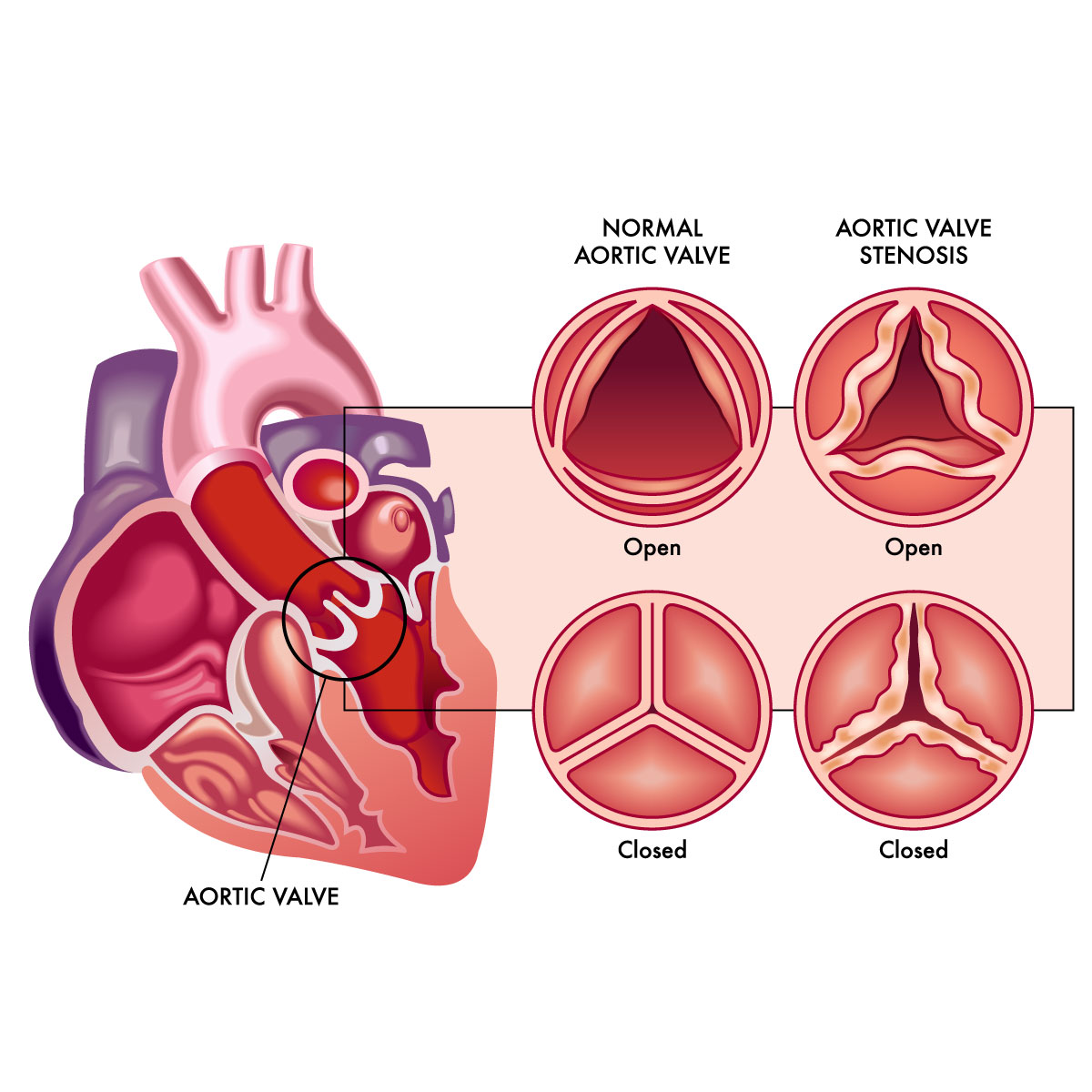
Aortic valve disease


Overview
Aortic valve disease is a disease that affect the valve between the body’s main artery (aorta) and left lower chamber of the heart (ventricle). The aortic valve controls blood flow by ensuring that it proceeds through the heart in the proper direction from the left ventricle to the aorta. Aortic valve disease can affect blood flow to the rest of the heart and body.
Types of aortic valve disease are as follows:
- Aortic valve stenosis: The aortic valve is thick and stiff, which causes the narrowing of the opening, which decreases or completely prevents blood flow to the body.
- Aortic valve regurgitation: Blood flows backward into the left ventricle as a result of an improperly closing aortic valve.
Aortic valve disease could occur from birth, or it could develop over time because of other medical conditions. Surgery and medications are the treatment options for aortic valve disease.
Symptoms
Aortic valve disease patients primarily as no symptoms but with time progresses to the following:
Aortic valve stenosis symptoms may include:
- Chest tightness or pain
- Rapid pulse rate
- Shortness of breath
- Fatigue
- Swelling of ankles
- Feeling dizzy or fainting
- Trouble with gaining weight (in children with aortic valve stenosis)
- Trouble with feeding (in children with aortic valve stenosis)
Aortic regurgitation symptoms may include:
- Chest tightness or pain
- Shortness of breath
- Fainting during excessive physical activity
- Palpitations
- Dizziness
- Swelling of ankles
If the patient has the signs and symptoms of aortic valve disease especially sudden chest pain, then emergency medical intervention is needed. Otherwise if you experience shortness of breath, exhaustion during exercise, or feelings of a pounding or irregular heartbeat, schedule an appointment with a medical professional.
Causes
Aortic valve disease can also develop as people age for the following reasons:
- Congenital heart defect: a defect in the structure of the heart that is present at birth
- Age-related changes to the heart: with increasing age, the valve will be thickening and loss of elasticity
- Infections in the heart valve, also called infective endocarditis
- High blood pressure
- Injury to the heart
Risk factors
Aortic valve disease risk factors include the following:
- Age: as people get older, calcium deposits can accumulate on the aortic valve, resulting in stiffening and narrowing of the aortic valve.
- Birth defect: congenital heart defects, patients who have congenital heart defect have higher risk to develop aortic valve regurgitation.
- Heart problem: an infection of the chambers’ lining and heart’s valves (endocarditis) may damage the aortic valve.
- Rheumatic fever: aortic stenosis, a form of valve disease, can be caused by strep throat complication. Rheumatic heart disease is the medical term for heart valve damage brought on by rheumatic fever.
- History of radiation therapy to the chest: patient who have history of radiation therapy have higher risk to develop aortic valve disease.
- Connective tissue disorder: Marfan syndrome, a connective tissue disorder can increase the risk or aortic valve disease.
- Chronic kidney disease: patient who have chronic kidney disease have an increased risk for the development of aortic valve disease.
Contact Information
service@vejthani.com






















